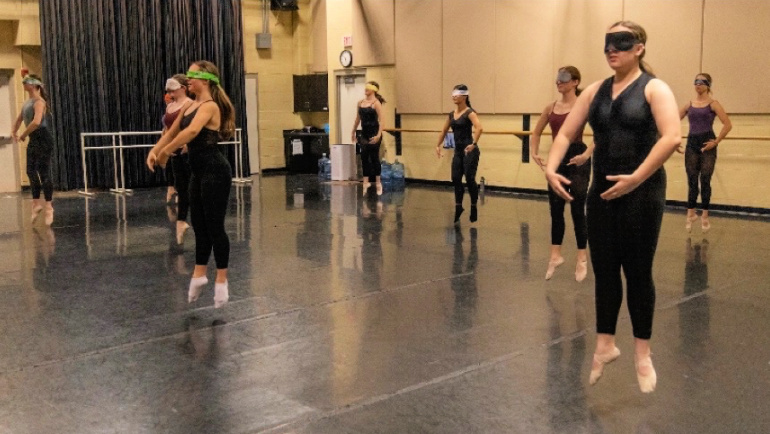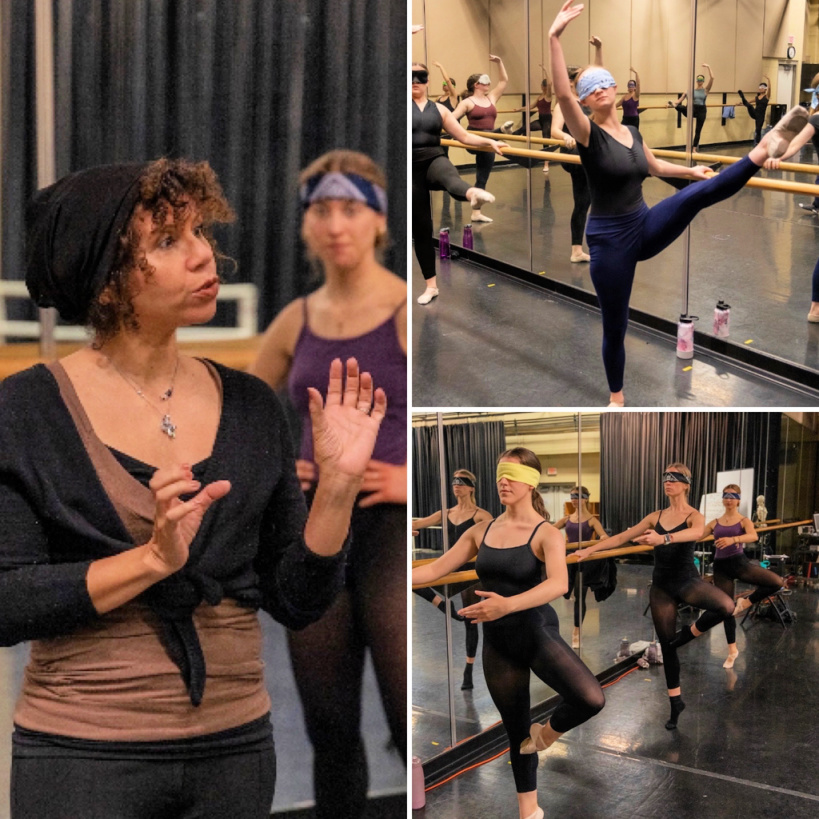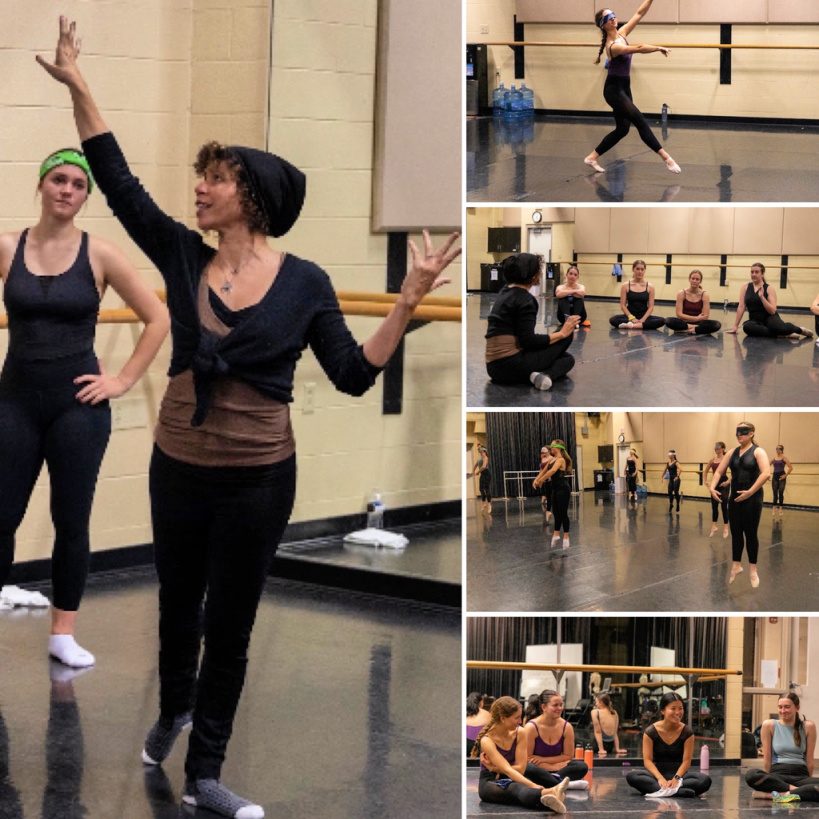
When picturing a dance studio, one of the first things that often comes to mind is a large ceiling-to-floor mirror. As a time-honored industry staple, the mirror serves as a training tool for dancers of all ages to watch and perfect their movements during practice. For many dancers, the mirror can also reflect in potentially harmful ways, exacerbating insecurities and body dysmorphia, or encouraging an unnecessarily competitive and comparative environment.
A new training method developed through research by Christine Colquitt Thacker, an assistant professor of dance at Anderson University and a master’s student in Wayne State University’s College of Fine, Performing and Communication Arts, seeks to change that narrative with a new method. That method — sightless somatic ballet study (SSBS) — removes the mirror, allowing dancers to become more intuitive with their bodies and their art by having them rehearse wearing a blindfold.
“As a dancer and dance educator, I’ve noticed that our field can be very rigid. There are a lot of mental and emotional health issues among my generation of dancers,” Colquitt Thacker said. “Our survival as an art form depends on the next generation, and so we owe them the tools they need to succeed. Sometimes, that means rethinking our way of doing things.”
Her research was presented at Wayne State University’s Graduate Research Symposium in March.
Perfect timing

Thacker, a lifelong dancer and longtime instructor, began developing the idea for a study on SSBS around the same time that her dance classes had to relocate because of construction in the studio. She recalls dancers being relocated to lobbies and hallways – and thriving.
“The dancers did amazing in that environment; there was so much growth and joy in their movement,” she said. “We had all of these beautiful upgrades to the space and no one – not the teachers or the students – was in a hurry to return to the studio.”
Colquitt Thacker had also watched her young daughter, who is dyslexic and discalculative, and visually impaired students become frustrated in dance classes.
“For those whose working memory and learning needs are different, dance classes can become frustrating instead of joyful because an instructor will share the information quickly and students are expected to just pick it up, process it and perform immediately,” she said. “It broke my heart to watch, and it made me question how many other kids fall through the cracks.”
Together, these experiences and observations sparked an idea: “What if we remove the mirror?”
Changing the view

For her research, Colquitt Thacker did just that. In 2019, she conducted a case study in sightless ballet classes, which explored the experiences of university-level dance majors who volunteered for sessions that replicated traditional ballet classes without the use of a mirror.
While some dancers reported an initial frustration with the method, they came to appreciate it as an avenue to hone their technique while feeling more connected to their bodies and themselves as artists.
“The mirror is a valuable learning tool, but it sometimes becomes something dancers can’t live without, almost a crutch,” said Colquitt Thacker. “So, it can be disorienting when it’s removed from the rehearsal process because there’s no visual confirmation. In time, they became more in tune with their bodies, movements and energy instead of being hyper reliant on the mirror.”
She said the method also encouraged more personal focus by removing opportunities for comparison and competition.
“When you remove the mirror and that reliance, it also forces the dancer to focus completely on themselves rather than focusing on others in the room,” she said. “In doing so, dance becomes a deeply personal journey, solely in their hands, where personal observations are easier and more natural.”
The method also more closely represented a performance setting, in which there are no mirrors.
“The point of dance – and any art – is to connect with an audience and pull them into an experience,” said Colquitt Thacker. “When a dancer is more in tune with themselves emotionally and physically from the very beginning of rehearsal, it translates into a more connected and authentic performance for the audience.”
Looking ahead
Intended to supplement but not replace traditional instruction methods, Colquitt Thacker said SSBS proved to be both efficient and empowering for dancers. She’s hopeful that the method can help foster a culture of care and wellness among the next generation of dancers, while furthering the art.
“My goal is for every dancer to feel like they did when they were little kids, dancing without a care in the world. I want them to remember why they loved dancing in the first place – to feel free and powerful,” she said. “I want people to look at this opportunity and consider other somatic practices that can benefit our dancers emotionally and physically – the field should evolve so we can continue to inspire.”
Colquitt Thacker’s study is available online.
